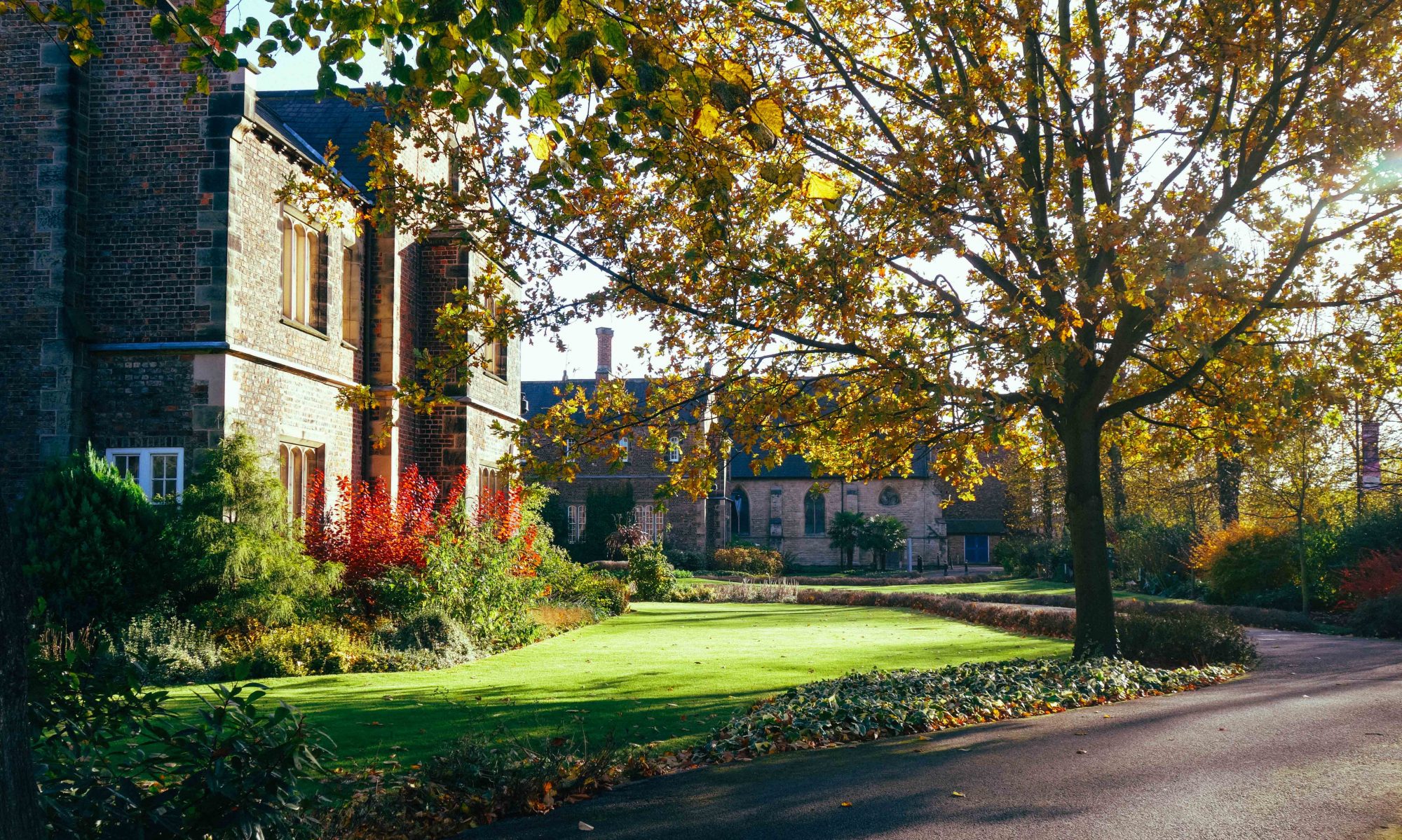In March this year, students on the Shakespeare: Perspectives module went to see The Northern Broadsides production of As You Like It, directed by Laurie Sansom. Second year student Blythe Roberts reflects on how this production speaks to 21st century ideas of gender and sexuality.
York Theatre Royal, 24th March 2022, Main Stage.

Through casting a non-binary actor, E M Williams, to play Rosalind, Laurie Sansom’s As You Like It rejects patriarchal constructions of gender and sexuality. A trans-queer interpretation of the play is depicted through Rosalind’s journey of self-discovery, exploring possibilities beyond the female identity enforced upon them, concluding the play with Rosalind’s identification as non-binary. This interpretation creates a radical opposition to the patriarchy, as Rosalind’s rejection of gender constructs creates a liberating queer space where they are no longer confined within patriarchal structures.
Sansom, together with trans-disciplinary artist and designer E M Parry, conveys this trans-queer interpretation through costumes and performance of gender, depicting Rosalind’s trans-journey. In the rigid patriarchal structures of the court, Rosalind’s identity as a woman is presented as a form of oppression (see Image 1). Once Rosalind is alone with Celia, they abruptly conclude their performance of ‘femininity’, using the act of disrobing as a rejection of the identity of an oppressed woman. Sansom uses this refusal to become oppressed within a patriarchal society as the incentive behind Rosalind’s fleeing into the woods and disguising as a man.
Liberated in the queer, liminal space that is the forest Arden, Rosalind explores their

sexuality through disguising as Ganymede, gaining power and authority in their performance of masculinity (see Image 2). Through Rosalind’s imitation of Orlando’s costume and performance, Sansom depicts the fluidity of gender as a performance rather than a biological influence on human behaviour. Therefore, Sansom’s production suggests that heteronormativity in patriarchal structures restricts gender to create a divide between men and women.
As the play progresses, though still disguised as Ganymede and thus identifying as male, Rosalind’s performance of gender becomes fluid as they explore and combine feminine and masculine constructs, displayed through the development of Rosalind’s costume, layering trousers with a tutu (see Image 3). The forest of Arden becomes a liminal space free from patriarchal structures, where there is no longer a divide between genders, symbolised through Orlando and Rosalind’s queer relationship. Whilst Orlando is in love with the ‘female’ Rosalind he met in the court, he is falling in love with the ‘male’ Ganymede, performed by the authentic Rosalind that embodies both genders. Therefore, their relationship is neither homosexual nor heterosexual, allowing Sansom to challenge the heteronormativity associated with gender constructs.

This depiction of the complex nature of love and sexuality, interpreted from the playtext and presented on stage, reflects critic Valerie Traub’s argument that “audiences increasingly recognize that Shakespeare’s representations of gender and sexuality are as complex, various and fascinating as our own bodies and selves” (Traub, 144). Sansom displays this analysis of Shakespeare’s understanding of the complexities of gender and sexuality through his interpretation of the play’s epilogue, to which Sansom depicts Rosalind identifying as non-binary.
Shakespeare challenges his society’s patriarchal ‘norms’ through breaking conventions and having a ‘female’ character present the epilogue, as Rosalind confesses: “It is not the fashion to see the lady the epilogue” (Shakespeare, 5.4.173). Furthermore, he challenges societies heteronormativity through the boy-actor’s display of sexual liberation in their performance of a female character. The actor is staged to ‘break character’ and challenge the audience to explore the fluidity of their own sexuality, as heteronormativity would assume the men to find Rosalind attractive, and thus the boy-actor, as he states: “If I were a woman, I would kiss as many of you as had beards that pleased me, complexions that liked me and breaths that I defied not” (Shakespeare, 5.4.183-5). Sansom adapts this display of gender and sexuality to reflect trans-queer feminism through Rosalind’s identity as non-binary. Therefore, as Rosalind delivers their final lines: “as many as have good beards or good faces or sweet breaths will, for my kind offer, when I make curtsy, bid me farewell” (Shakespeare, 5.4.185-6), Sansom has the audience applauding the progression of queer representation through this heart-warming acceptance of Rosalind’s newfound identity.
See the Northern Broadsides’ As You Like It trailer here. See their short video on constructing identities in the play here. See their plot summary here.
Works Cited:
Sansom, Laurie. As You Like It. Northern Broadsides, 2022.
Shakespeare, William. “As You Like It.” The RSC Shakespeare Complete Works, edited by Jonathan Bate & Eric Rasmussen, Macmillan, 2007, pp. 472-525.
Traub, Valerie. “Gender and Sexuality in Shakespeare.” The Cambridge Companion to Shakespeare, Cambridge University Press, 2001, pp. 129-146.
Images:
Billington, Andrew. As You Like It, Northern Broadsides, 2022, https://www.northern-broadsides.co.uk/shows/as-you-like-it/ .
